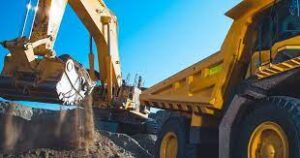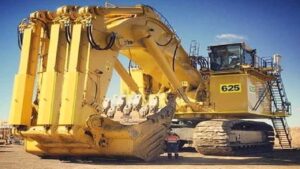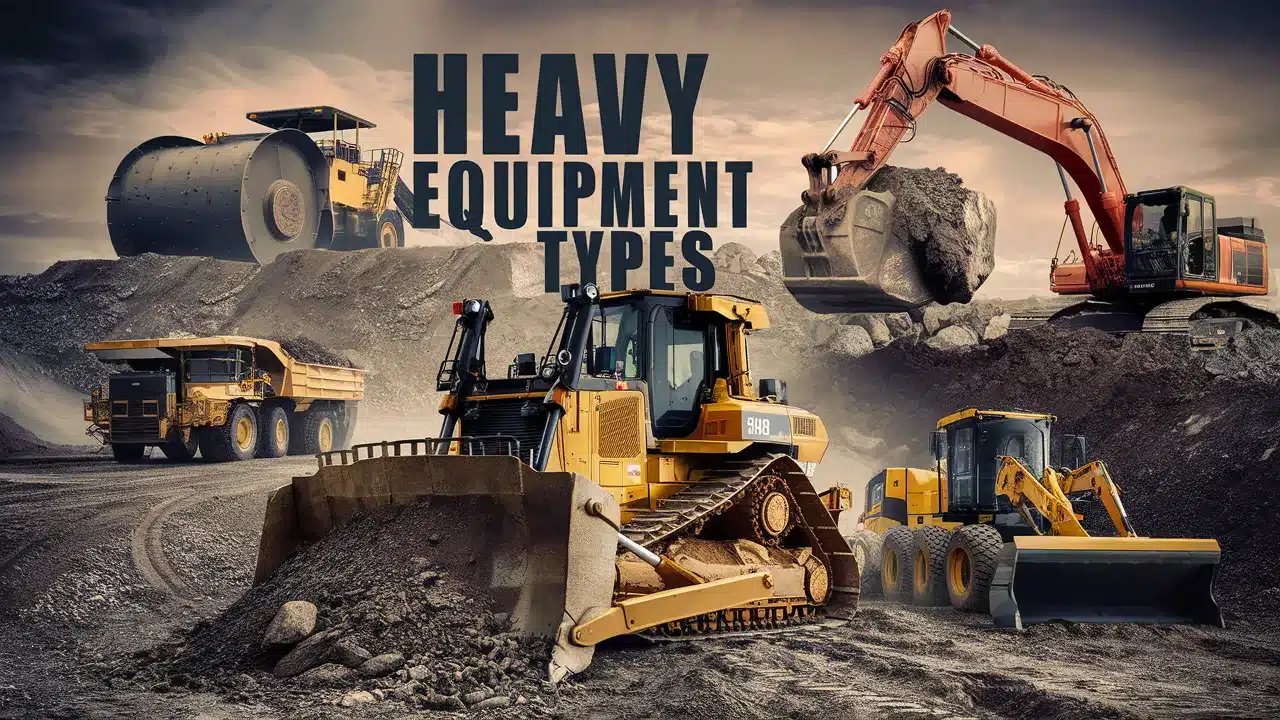List Of Contents
Heavy machinery, often referred to as heavy equipment, plays a crucial role in shaping the infrastructure, industrial development, and day-to-day operations of various sectors. From construction sites to mining operations, these robust machines have transformed the way we approach large-scale tasks, enabling efficiency, safety, and precision.
Definition and Importance of Heavy Machinery

Heavy machinery encompasses a wide range of equipment designed to perform complex and large-scale tasks. These machines are engineered to handle activities that would otherwise be impossible or inefficient for human labor alone. Heavy machinery is essential in industries such as construction, agriculture, mining, and logistics. Their ability to perform tasks such as excavation, lifting, grading, and transportation makes them indispensable in modern development.
The significance of heavy machinery lies in its ability to save time, reduce labor costs, and improve project efficiency. For instance, a single bulldozer can accomplish what would take a team of workers days to complete manually. This efficiency not only accelerates project timelines but also enhances the overall quality and safety of operations.
Types of Heavy Machinery and Their Functions
Heavy machinery is classified into various categories based on its specific applications. Each type serves a unique purpose, contributing to different stages of industrial processes.
Earthmoving Machinery
Earthmoving machinery includes equipment such as excavators, bulldozers, and loaders. These machines are designed to move large quantities of soil, rocks, and debris, making them essential for construction, mining, and landscaping projects. Excavators, for example, are equipped with a bucket attached to a long arm, allowing them to dig deep trenches and foundations.
Material Handling Equipment
Material handling equipment, including cranes, forklifts, and conveyors, is used to transport and position materials in construction and industrial settings. Cranes are particularly valuable for lifting and placing heavy loads at significant heights, while forklifts are commonly used in warehouses to move pallets and materials efficiently.
Road Construction Machinery
Road construction machinery, such as graders, asphalt pavers, and compactors, is critical for building and maintaining roadways. Graders are used to create a level base for roads, while asphalt pavers lay the surface material. Compactors ensure that the layers are tightly pressed, providing durability and strength to the finished road.
Mining Equipment
Mining operations heavily rely on specialized machinery such as drills, draglines, and haul trucks. These machines are designed to extract valuable minerals and resources from the earth. For instance, drills are used to bore deep into the ground, while haul trucks transport the extracted materials to processing plants.
Agricultural Machinery
Agricultural machinery, including tractors, harvesters, and plows, has revolutionized farming practices. These machines enhance productivity by automating tasks such as planting, harvesting, and tilling, enabling farmers to cultivate larger areas of land with greater efficiency.
Technological Advancements in Heavy Machinery

The evolution of heavy machinery has been driven by advancements in technology, resulting in more efficient, safer, and environmentally friendly equipment. Modern heavy machinery incorporates features such as automation, telematics, and hybrid power systems.
Automation and Artificial Intelligence
Automation has become a game-changer in the heavy machinery industry. Autonomous machines, such as self-driving bulldozers and excavators, can operate with minimal human intervention. These machines use artificial intelligence and sensors to navigate and perform tasks accurately, reducing the risk of human error and increasing productivity.
Telematics and Connectivity
Telematics systems enable real-time monitoring and data collection from heavy machinery. Operators and managers can track machine performance, fuel consumption, and maintenance needs remotely. This connectivity ensures optimal machine usage, reduces downtime, and improves decision-making.
Environmentally Friendly Innovations
As sustainability becomes a global priority, heavy machinery manufacturers are adopting eco-friendly practices. Hybrid and electric-powered machines are being developed to reduce emissions and fuel consumption. These innovations contribute to a greener future while maintaining the performance required for demanding tasks.
Maintenance and Safety Considerations
Proper maintenance and safety practices are essential to ensure the longevity and reliability of heavy machinery. Regular inspections, servicing, and adherence to safety protocols are critical for preventing accidents and minimizing downtime.
Preventive Maintenance
Preventive maintenance involves routine checks and servicing to identify and address potential issues before they escalate. This includes inspecting hydraulic systems, replacing worn-out parts, and monitoring fluid levels. Preventive maintenance not only extends the lifespan of machinery but also enhances its efficiency.
Operator Training and Safety Measures
Operator training is vital for ensuring the safe and effective use of heavy machinery. Trained operators understand how to handle machines correctly, reducing the risk of accidents and equipment damage. Safety measures such as wearing protective gear, adhering to load limits, and maintaining clear communication on job sites further enhance workplace safety.
Adapting to Harsh Environments
Heavy machinery often operates in challenging conditions, such as extreme temperatures, rugged terrains, and dusty environments. Manufacturers design machines with robust materials pg slot and advanced engineering to withstand these conditions. Proper maintenance ensures that the equipment remains functional and safe even in the harshest settings.
Challenges Facing the Heavy Machinery Industry

Despite its numerous benefits, the heavy machinery industry faces several challenges that impact its growth and operations. Addressing these challenges is essential for sustaining progress in the sector.
High Initial Costs
Heavy machinery represents a significant investment for businesses. The high initial costs of purchasing and maintaining equipment can be a barrier for small and medium-sized enterprises. Leasing and rental options are increasingly popular solutions, providing businesses with access to machinery without the burden of ownership.
Environmental Concerns
The heavy machinery industry has been criticized for its environmental impact, including carbon emissions and resource consumption. While advancements in hybrid and electric technologies are addressing these concerns, widespread adoption remains a challenge due to cost and infrastructure limitations.
Workforce Shortages
A shortage of skilled operators and technicians is a growing concern in the heavy machinery industry. As the workforce ages and fewer young professionals enter the field, companies are investing in training programs and automation to bridge the gap.
The Future of Heavy Machinery
The future of heavy machinery is marked by innovation and sustainability. Emerging technologies, such as robotics and artificial intelligence, are expected to redefine the capabilities of heavy equipment. Additionally, the industry’s focus on reducing environmental impact will drive the development of more sustainable machinery.
The integration of smart technologies, such as IoT and data analytics, will enable predictive maintenance and real-time performance optimization. These advancements will improve efficiency, reduce costs, and enhance safety across various industries.
Conclusion
Heavy machinery remains an integral part of modern industry, driving progress and enabling large-scale development. With continuous technological advancements and a focus on sustainability, the sector is poised to overcome challenges and contribute to a more efficient and environmentally conscious future. As industries continue to evolve, heavy machinery will remain a cornerstone of innovation and productivity.

